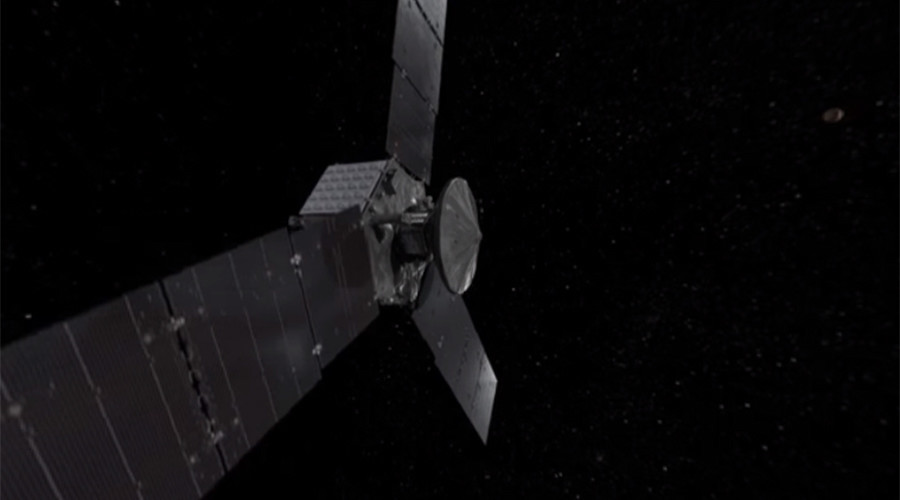
After an almost five-year journey, the US space agency’s solar-powered Juno spacecraft has arrived on Jupiter's door steps and starts its “orbit insertion maneuver”. The mission tweets: "Main engine burn is go."
The burning of the engine is expected to take 35 minutes. After that, Juno is expected to slow down to 1,212 miles per hour (542 meters per second), positioning itself safely in Jupiter's orbit.
By the time the spacecraft sends back all the tones to Earth to report completion of the “suspenseful” maneuver, Juno should have re-oriented its positioning toward the sun to recharge its batteries.
Ahead of the final descent into Jupiter's orbit, scientists were on the edge of their seat hoping for Juno to complete the maneuver before it ran out of power. Once in orbit, Juno is to circle the planet 37 times over the next 20 months, flying some 3,100 miles (5,000 kilometers) from Jupiter’s surface.
"I'm really just nervous that the whole orbit insertion rocket burn is going to work enough to get us into orbit and then allow us to turn back to the sun before we run out of battery power," Scott Bolton, the principal investigator for Juno with the Southwest Research Institute in San Antonio said at a news conference ahead of the historic moment.
NASA expects to receive first images via JunoCam from Jupiter in a few days, as the spacecraft awaits “downlink” windows a “handful of times” as it orbits the distant planet. Juno was forced to shut down its cam five days prior to the arrival, but now scientists eagerly await the images, including the one of the "Great Red Spot" – a raging storm three and a half times the size of Earth located in Jupiter's southern hemisphere.
Juno was launched from Cape Canaveral Air Force Station on August 5, 2011. The mission of the spacecraft is to study the origin and evolution of Jupiter. Scientist hope to shed light on how much water there is in Jupiter's atmosphere. Juno will also be instrumental in measuring the composition, temperature, cloud motions and other properties of the planet.
In addition to mapping out Jupiter's gravity fields, Juno will help study Jupiter's magnetosphere near the planet's poles, with a special focus on the auroras – northern and southern lights.
Juno is the second spacecraft to orbit Jupiter, following the Galileo probe which orbited the planet in 1995–2003.



No comments:
Post a Comment